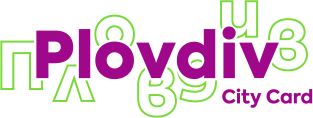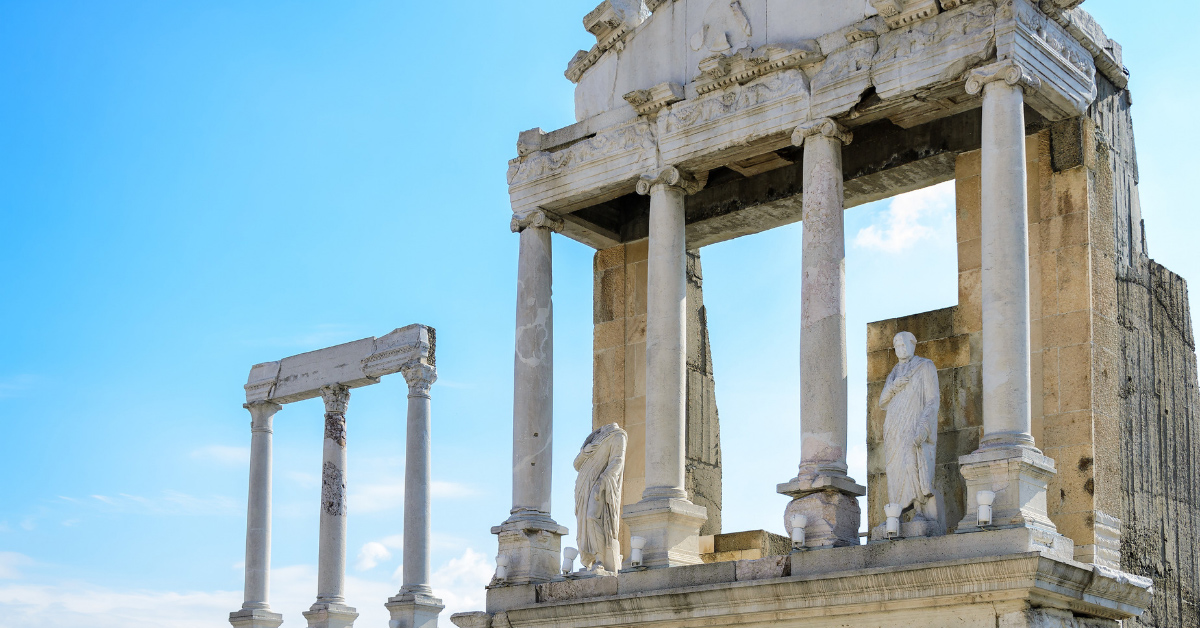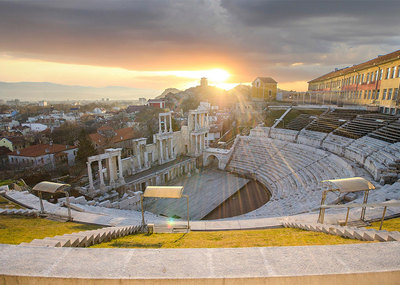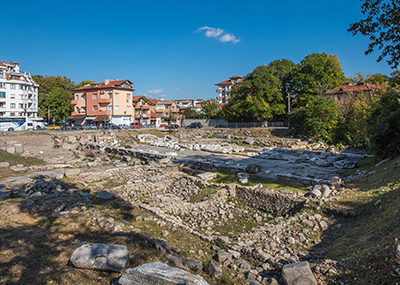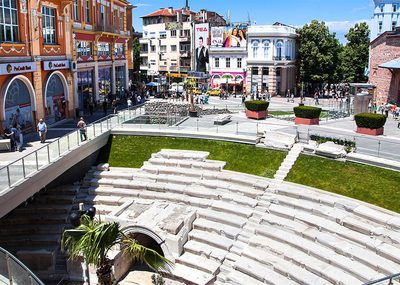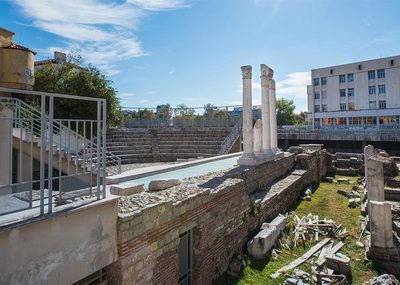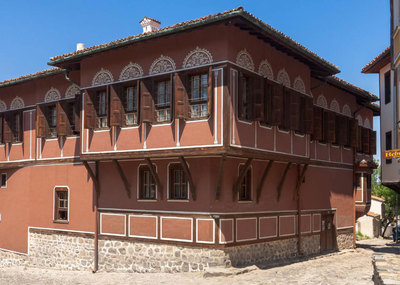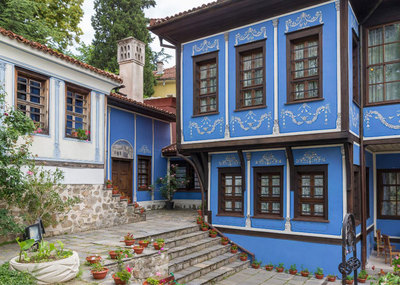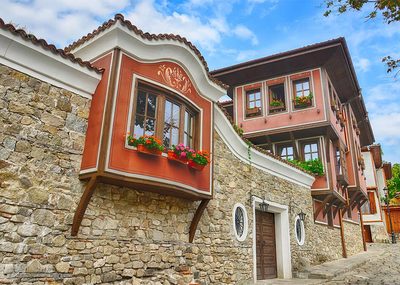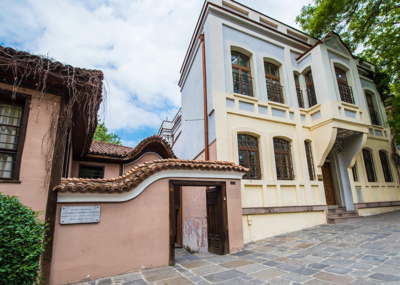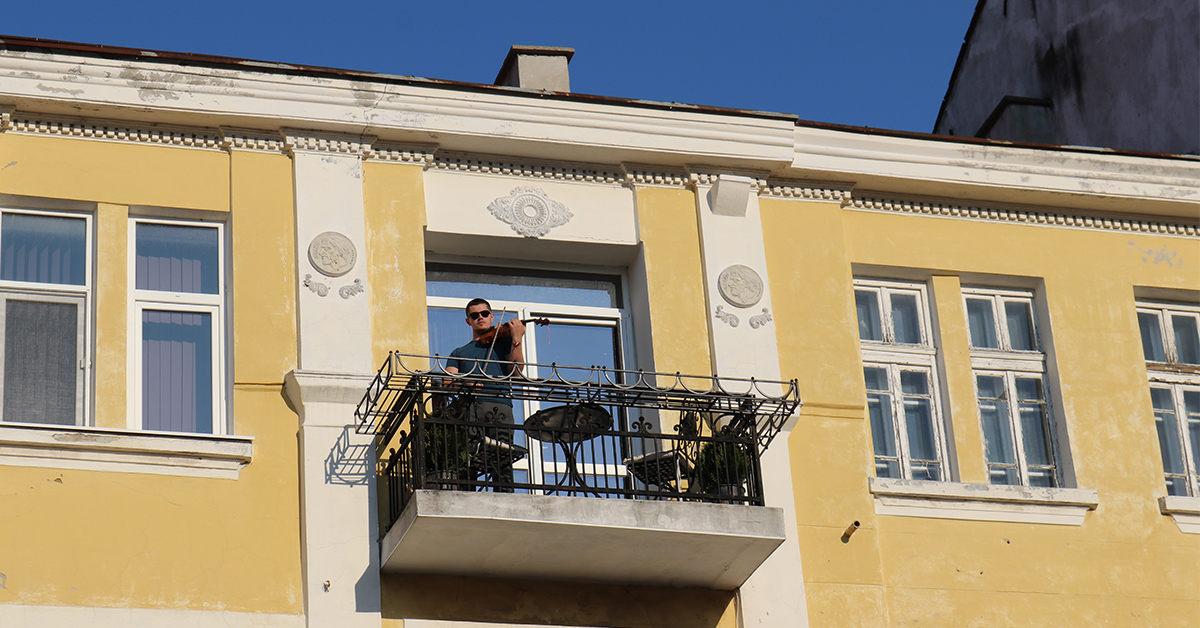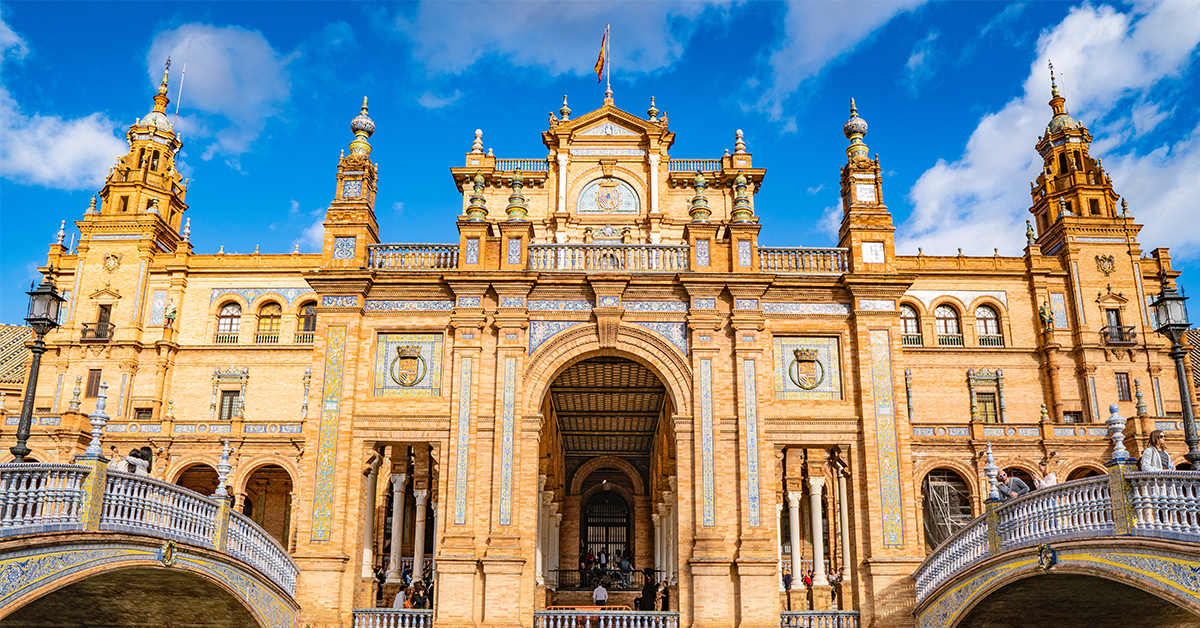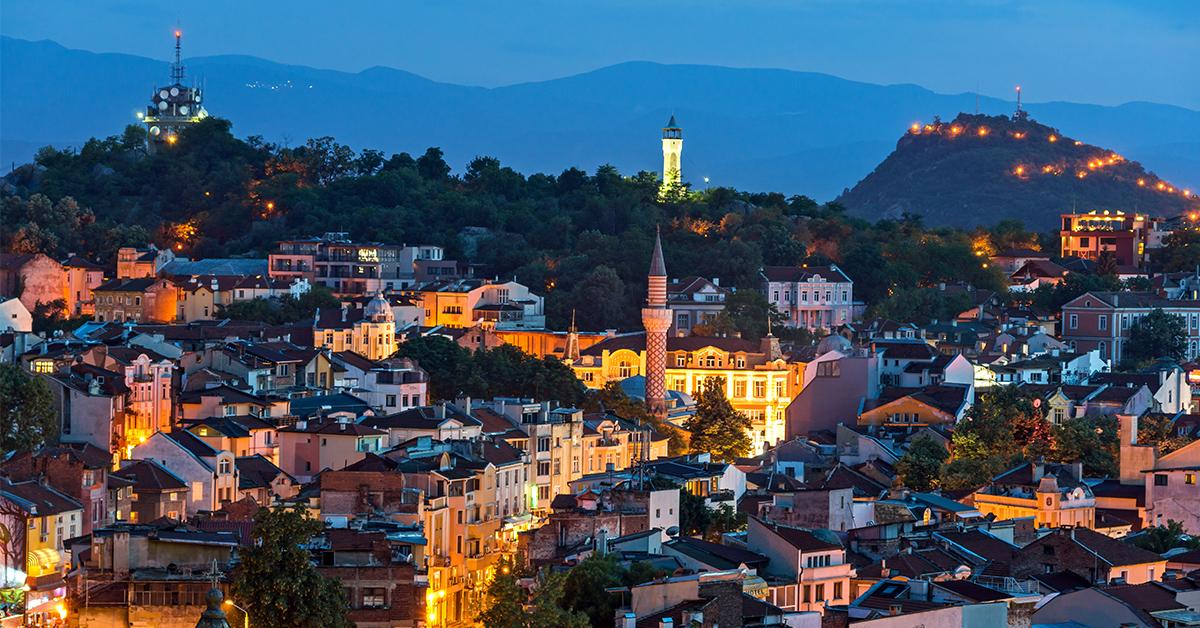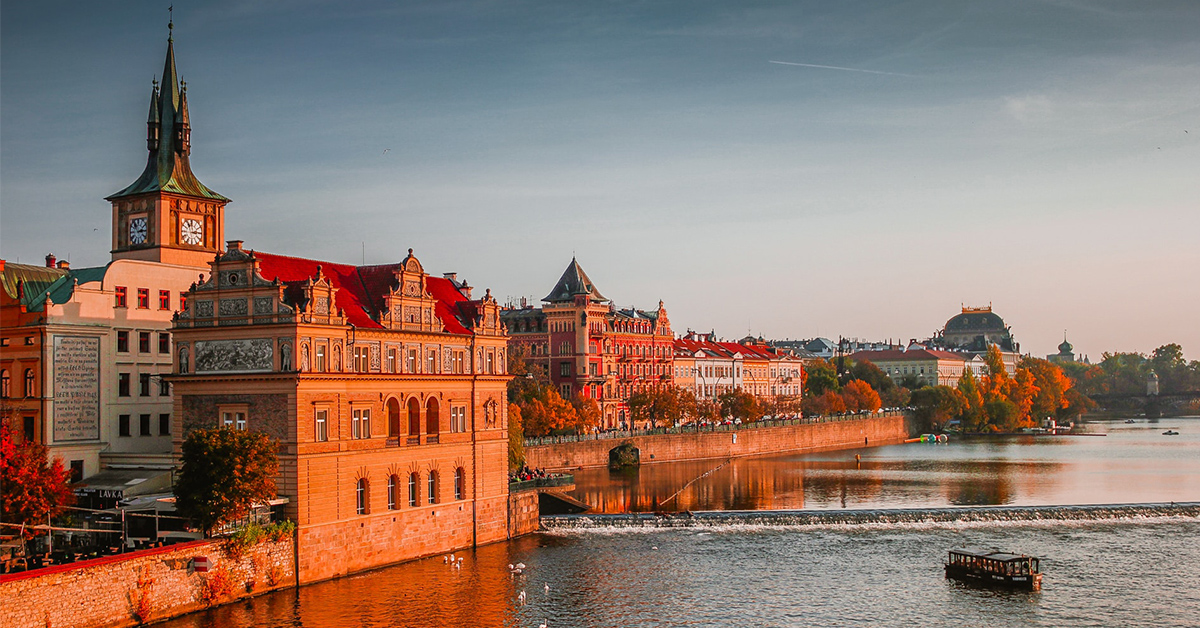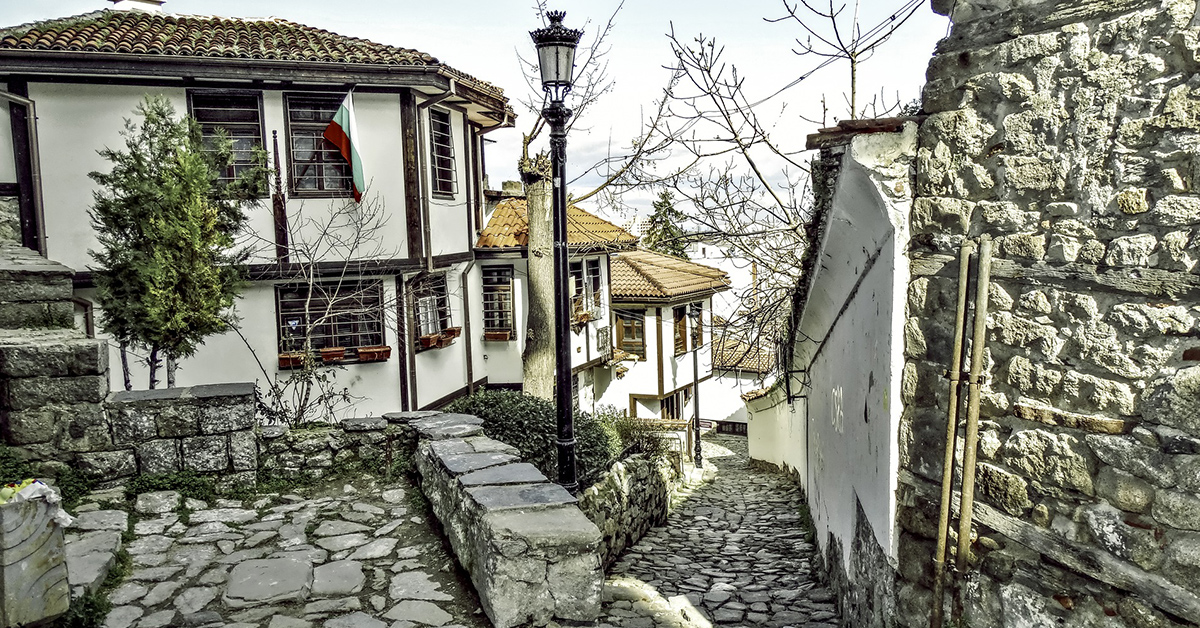History Of Plovdiv: 8000 Years in 1000 Words
What is older than Ancient Rome and arguably older than Ancient Athens? Plovdiv – it’s one of the oldest cities in Europe! With every step you take in the city, you will come across a piece of the world’s history. There are many monuments of civilizations long gone that still exist there today. Come on an exciting tour around the vibrant 8000 years of history of Plovdiv!
Exploring the history of Plovdiv: where did it all begin?
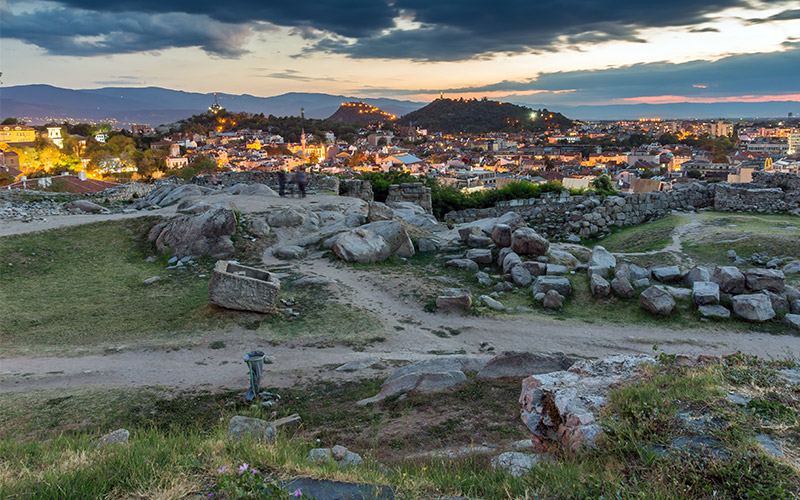
Nebet Tepe: The birthplace of Plovdiv and Europe’s oldest continuously inhabited city
6000 BC
The prehistoric ruins on Nebet Tepe are one of Plovdiv’s wonders. Nebet Tepe has the earliest traces of civilized life dating back to the Neolithic era in the 6th millennium BC. This makes Plovdiv around 8,000 years old! It’s also one of the oldest cities in Europe (and the world’s six oldest city, according to a Daily Telegraph ranking).
1200 BC
During the Iron Age the Thracians established their fortifications on the hill and expanded the city around it. The Thracian King who rules the city around 1200 BC, named the town Evmolpia.
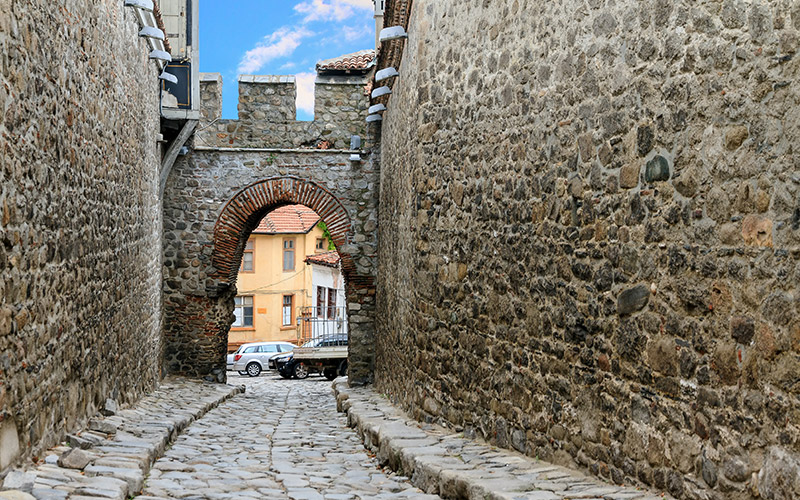
342 BC
Later, in the Antiquity period (342 BC), Philip II of Macedon conquered Evmolpia and named it Philippopolis. He rebuilt the city, expanded the fortification on Nebet Tepe and made Philippopolis the most important city in Thrace.
72BC
The Romans conquered Philippopolis in 72BC and named it Trimontium. They made it one of the main cities in the new Roman Province of Thrace. The Roman period was a very important time in which the city really thrived.
How did the Romans transform the city?
The Romans expanded the fortress, built new streets and aqueducts, as well as a sewage system. An amphitheatre and a 30 000-seat stadium were also built around that time.
350 – 400
After the collapse of the Roman Empire at the end of 4th century, Plovdiv stayed under Eastern Roman Empire – Byzantium rule. This was until the Slavs invaded the city at the beginning of 7th century.
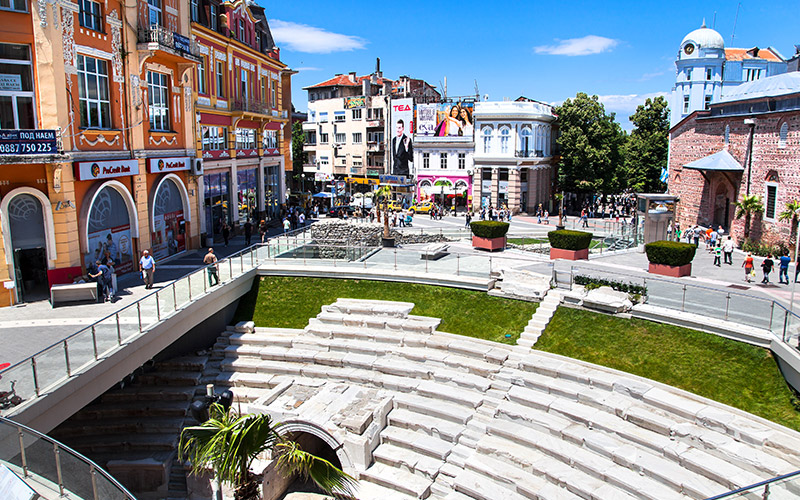
Take a look at these historical locations!
Bulgaria – the rise of a New Country
The Slavs formed a union with the Bulgarian tribes who established the country of Bulgaria. Khan Krum conquered Plovdiv in 812 and the city officially became part of Bulgaria around 834.
Plovdiv was handed around more than 10 times during the Middle Ages. The Bulgarians, Byzantines and the Latins fought hard to keep the city.
5 Centuries of Ottoman Rule
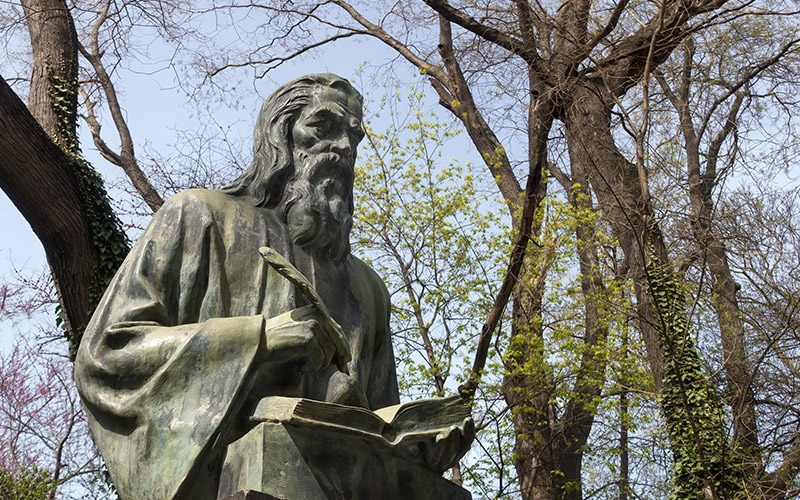
1371
Plovdiv fell under Ottoman rule that lasted over 5 centuries. The Turkish empire then renamed the town to Filibe.
1600-1700
During this period the Bulgarian people had limited civil rights. The culture was narrowed down to old folklore and education in monasteries. Language, Christianity and traditions are what united the Bulgarian people.
The terrible living conditions and ongoing suppression of religion and culture really took their toll on the Bulgarian people. A Bulgarian monk – Paisius of Hilendar wrote a book that was a collection of Bulgarian history. The book became a very powerful trigger for revolution. It boosted people’s confidence and helped preserve the history for the future generations.
1860
The bishop of Plovdiv, Paisius, held a service in the Bulgarian language. He publicly denounced the Greek patriarch of Istanbul and this created a great scandal. Plovdiv soon became the most radical centre for the liberation of the Bulgarian Orthodox church.
1876
Leaders of the Revolutionary Organizations were planning many uprisings during this time. In one of the most important (The April Uprising), all 4 revolutionary districts took part. The Plovdiv region was the strongest.
April 24 1877
Russia declared war on the Ottoman Empire. After a series of bloody battles, in January 1878, Russian troops liberated Bulgaria.
The National Revival Period & Plovdiv’s Old Town
1800-1900
At the end of the 19th century, many Bulgarians established trade connections with Central and Western Europe. The trade involved mostly cotton, cloth, metal, wood and decorative braid.
As the Revival movement spread from the monasteries back into society, the new wealthy groups started to invest their money. They chose art, architecture, literature and new ideas.
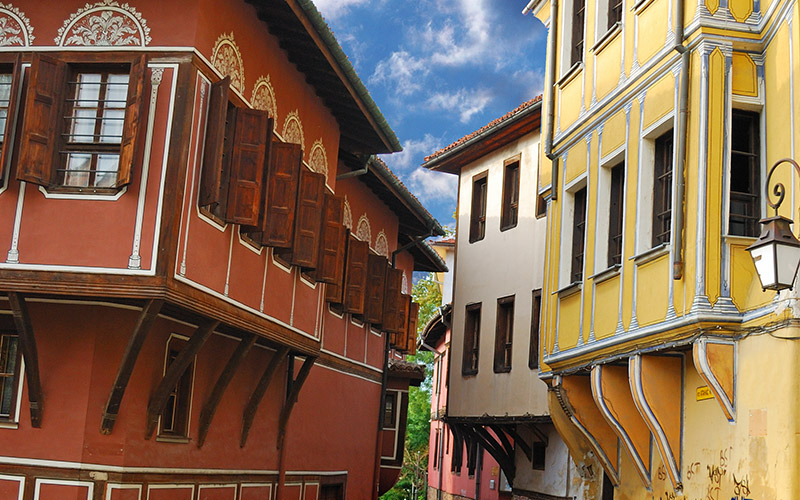
Plovdiv’s Old Town is a living museum. As you stroll around it you almost feel as if you’re in a history book. There are buildings and traces of almost every historical period!
Around the time of National Revival, wealthy Bulgarian traders took on ideas, architecture styles and know-how from Europe. Of great impact were influences from The French Revolution.
The new houses built in the Old Town were like mansions. They had fancy decoration and bright colours. The architectural style of each house was either symmetrical and asymmetrical. The walls, ceilings and facades were painted with various oriental designs.
Want to learn more about these places?
What you can still see in Plovdiv today…
Nebet Tepe
You can still see traces and ruins from the eastern wall, ancient water reservoir, the postern and parts of the gate and western wall.
The Ancient Roman Theatre
One of the most iconic sites of the entire city. It was built by the Roman Empire more than 2000 years ago. The venue is still in use today and hosts events and concerts regularly.
Hisar Kapia
This gate dates back to the 11-13th century but its fundamentals are from the Roman times. It was one of the gates to the ancient city of Philippopolis.
Roman Stadium
The Stadium of Trimontium is one of the largest structures from the time of Ancient Rome on the Balkans, and it’s still in good condition.
The Odeon of Philippopolis
The house of the city council for the citizens of ancient Plovdiv. It also used to be a theatre.
Kapana
The district was once a popular centre for craftsmen 5 centuries ago and now it’s a trendy art district for young artists and craftsmen.
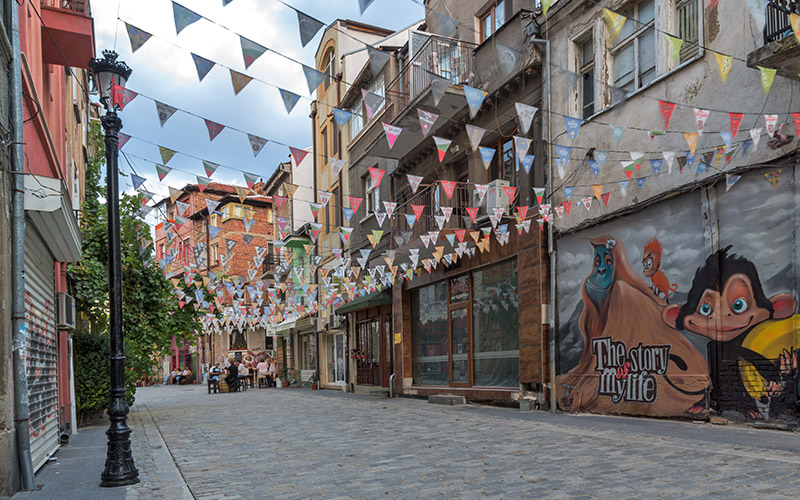
To learn more about the history of Plovdiv, you can also join the Free Plovdiv Tour!
Plovdiv Now
In recent years Plovdiv has stood out as the cultural centre of Bulgaria. The city places huge importance on archaeological excavations, the renovation of public buildings and stimulating the arts. This has greatly encouraged cultural tourism. So why not come down and explore the ancient history of Plovdiv yourself?
